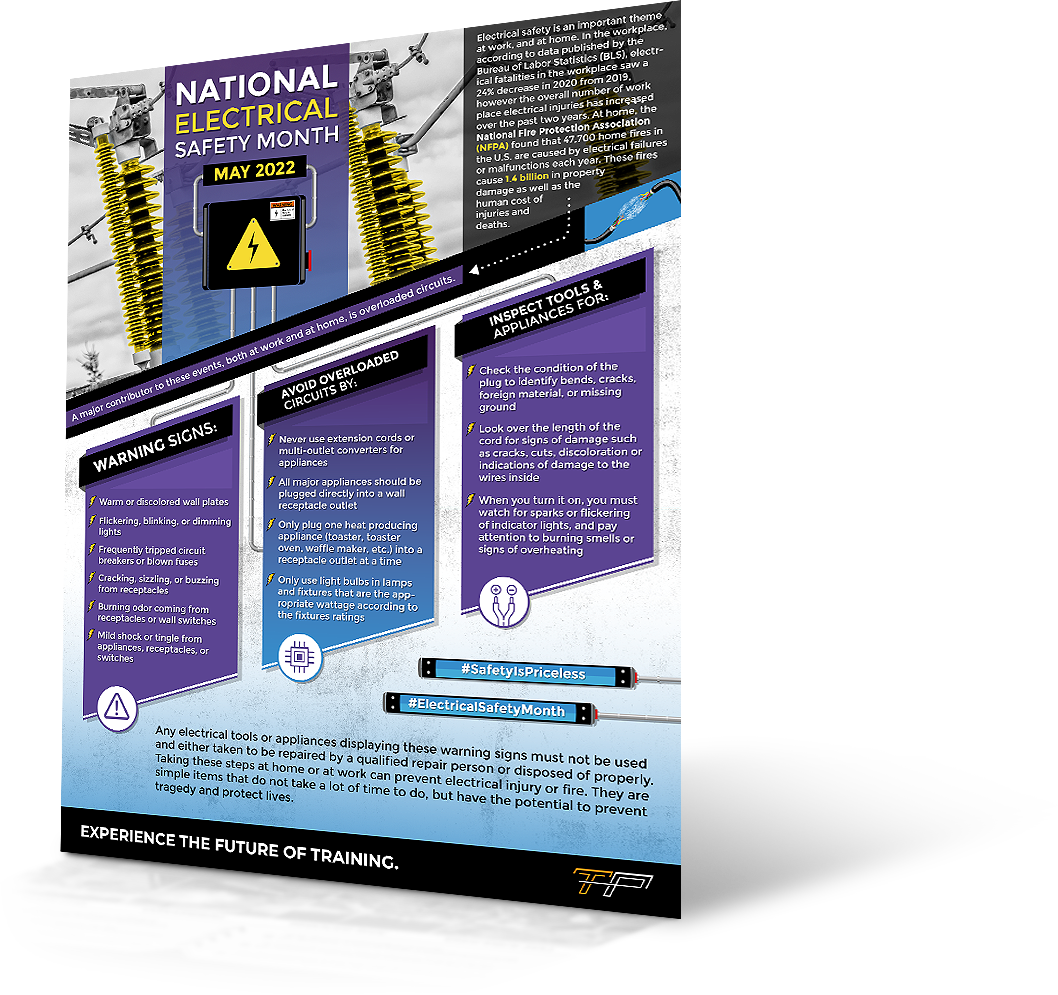National Electrical Safety

Electrical safety is an important theme at work, and at home. In the workplace, according to data published by the Bureau of Labor Statistics (BLS), electrical fatalities in the workplace saw a 24% decrease in 2021 from 2020, however the overall number of workplace electrical injuries has increased over the past two years. At home, the National Fire Protection Association (NFPA), found that 47,700 home fires in the U.S. are caused by electrical failures or malfunctions each year. These fires cause 1.4 billion in property damage as well as the human cost of injuries and death.
Any electrical tools or appliances that display the warning signs below must not be used and either taken to be repaired by a qualified professional, or disposed of properly. Taking these steps at home or at work can prevent electrical injury or fire. They are simple items that do not take a lot of time to do, but have the potential to prevent tragedy and save lives.
A major contributor to these unfortunate events, both at work and at home, is overloaded circuits.
WARNING SIGNS:
- - Warm or discolored wall plates
- - Flickering, blinking, or dimming lights
- - Frequently tripped circuit breakers or blown fuses
- - Cracking, sizzling, or buzzing from receptacles
- - Burning odor coming from receptacles or wall switches
- - Mild shock or tingle from appliances, receptacles, or switches
AVOID OVERLOADED CIRCUITS BY:
- - Never use extension cords or multi-outlet converters for appliances
- - All major appliances should be plugged directly into a wall receptacle outlet
- - Only plug one heat producing appliance (toaster, toaster oven, waffle maker etc.) into a receptacle outlet at a time
- - Only use light bulbs in lamps and fixtures that are the appropriate wattage according to the fixtures ratings
INSPECT TOOLS & APPLIANCES FOR:
- - Check the condition of the plug to identify bends, cracks, foreign material, or a missing ground
- - Look over the length of the cord for signs of damage such as cracks, cuts, discoloration or indications of damage to the wires inside
- - When you turn it on, you must watch for sparks or flickering of indicator lights, and pay attention to burning smells or signs of overheating